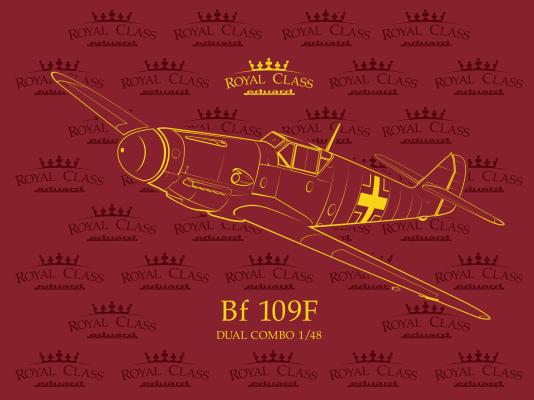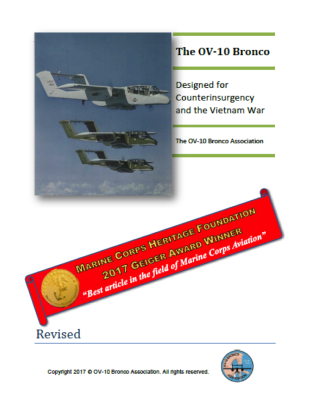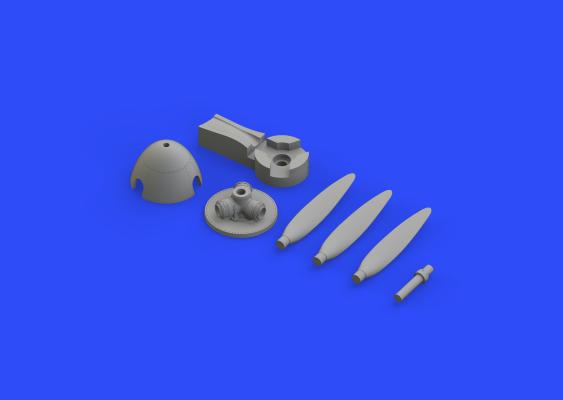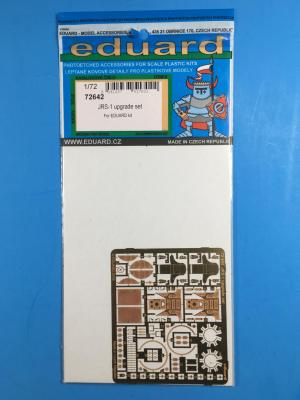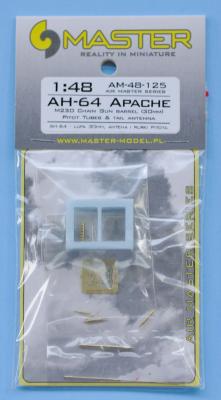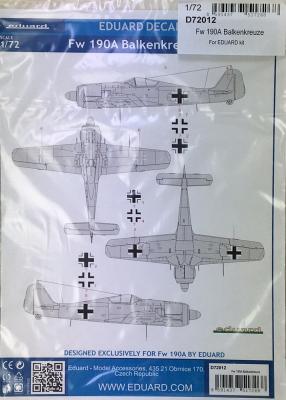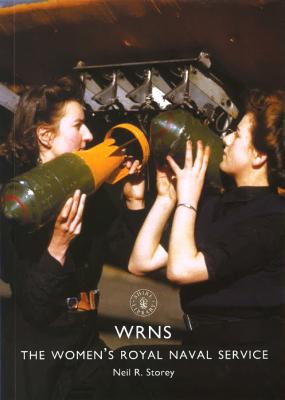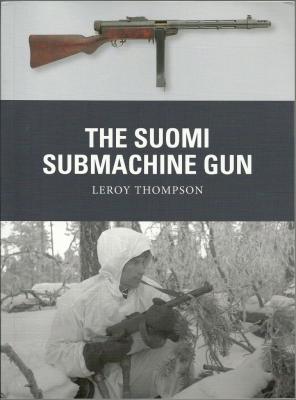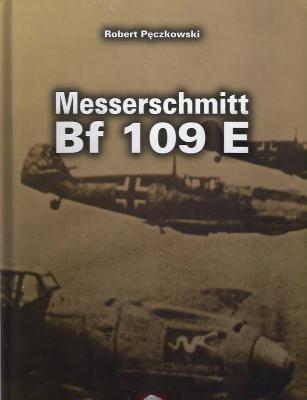The pinnacle of the Eduard product line is the Royal Class series. The particular boxing features two complete Bf-109F kits, one with square wheels wells and one with round ones. Two clear plastic sprues round out the plastic parts. Brassin wheels, tail wheels and exhausts are the resin pieces included. Two pre-painted photo etch frets are included along with six brass frets. The one fret contains the parts necessary to do the F-1 variant of Werner’s Mölders, the first time this variant has been modeled. Then there are three frets for the exhaust shrouds. A single mask set includes the masks necessary for both models. Of course there are marking options, 14 of them to be exact.
What's New
Thanks to Mr. Ashby Shoop for providing me a copy of this booklet during it’s development, and the Fort Worth Aviation museum for sending a finished E-copy to me to review after purchase.
If you are looking for a quick reference on the OV-10, the Folks at the Fort Worth aviation Museum have a new document which provides an excellent, concise history of the aircraft. Included are development and early history of what the requirement is that led to the Bronco, who worked on it, and the history of how the aircraft evolved. The majority of the book focuses on Marine air and navy use; Air Force operations are touched on but not in detail.
The Eduard Bf-109F kit is a beautiful feat of engineering and looks every bit the part of a Freidrich. But what if you want to add a little bit of detail? Something outside the norm? That is where the Brassin range comes in.
There were three different types of props that were used on the Bf-109F. The Early type of prop was the VDM 9-11207. This type of propeller was used on the Bf-109F-1 and F-2s. This set depicts this prop arrangement.
This particular offering is a realistically thin and proper shaped propeller blades. There are seven resin parts and two small photo etch pieces included in the set. They are packaged in a vacuform blister pack with Styrofoam pieces to protect the pieces during transit. The resin is light grey with no blemishes or bubbles anywhere.
Thank you to the great folks at Eduard for releasing an elegant upgrade set to enhance their kit of a unique Sikorsky flying boat. Thank you also to the IPMS Reviewer Corps staff members who do the hard work in getting us kits to review, the reviews posted, and the news spread to the world.
The Sikorsky JRS-1, or S-43, is similar in appearance to the famous Pan Am Clipper, the S-42. I did not know that several of these planes survived the Pearl Harbor attack, and went in search of the Japanese fleet immediately afterward. This upgrade is very nice supplement to the base kit.
Overall Summary
The upgrade parts are all on a thin brass etched fret 2.75 x 3.25 inches in size. A color instruction and accurate placement guide accompanies the parts. Additional details for the cockpit and exterior are included. Fold lines are etched, allowing very precise forming of even the smallest handles and other small details.
This Master Model set provides a huge leap over any of the injected molded parts available on any 1/48 kit. I based this review on the older Monogram kit from 1986, but it applies to any of the 1/48 kits on the market. This set includes a turned brass tail antenna (not included on the Monogram kit), two pitot tubes (again not present on the Monogram kit), and the forward part of the M230 Chain Gun. The M230 Chain Gun parts include eight parts, but one of the parts is a spare. You can easily see the crisper detail available in the comparisons in the attached pictures.
This decal sheet states that it was designed exclusively for use with Eduard’s outstanding 1/72 Fw 190A series of kits. The sheet provides seven different styles of Balkenkreuze, consisting of the simple white outline Balkenkreuze for the upper wings, and three options for both the fuselage and the underwing Balkenkreuze. There are the simple black Balkenkreuze outline, a solid black Balkenkreuze with a white border and the solid black Balkenkreuze with the white outline and a thin black outline outside of the white. This provides a lot of options to match the style Balkenkreuze used on the aircraft you are modeling.
As with all of Eduard’s new decals, these are very thin, but strong and react extremely well to Microsol and Microset, snuggling right down over details without silvering.
Neil R. Storey attended North Walsham High School and completed is pre- and post-graduate work at the University of East Anglia. is a social and military historian focused on the impact of crime, war, and medicine on British society. He has been writing since the late 1980s and has pursued military, historical crime, and topographical topics. Author of nearly fifty books, including: Animals in the First World War (2014), The Women’s Land Army (2012), The Women’s Suffrage Movement (2012), The Battle of Britain (2012), The Victorian Criminal (2011), Women in the Second World War (2011), Women in the First World War (2010), The Home Guard (2010). Neil continues to write articles for national magazines and national journals in addition to providing lectures across the UK. He has served as a consultant for both radio and television.
Osprey Publishing continues to expand its weapon series, this time by adding a book on the exemplary Finnish-made Suomi KP/-31 submachine gun.
The book has a very reasonable breakdown of the following chapters: Introduction, development, use, impact, conclusion and bibliography, plus an index.
I’ve found particularly interesting the development, use and impact chapters. They were clearly really well researched and it included descriptions of the weapon characteristics, as well as the description of its use in combat by the Finnish ski troops against the Soviet troops. It should be noted that this submachine gun could also be used as a sniper gun, giving its high accuracy up to distances of several hundred meters.
Perhaps one of the best compliments to the overall design and performance is that this particular submachine gun was somewhat copied by the soviets and issued to their own troops in the later years of the war.
You can view the book trailer for this publication at this YouTube video. This video provides a preview of the entire book, cover to cover.
Written by Robert Peczkowski with color profiles by Artur Juszczak, this book covers the evolution of the Bf-109E from 1936 to 1941, from the E-0 to the E-9 in the “Emil” series. This is the second, expanded, and revised edition of an MMP book covering the Bf-109E.
This is the second detailing set from Quickboost for the new Trumpeter Su-24 Fencer kits and focuses on the external antennas. The set includes replacements for 3 of the antennas in the kit and provides 5 others that are not in the kit. As the set is market simply for the Trumpeter Su-24, you may need to alter the antenna locations a little bit depending on whether you are building the Su-24MR or the Su-24M.
The antennas are sharply cast in Quickboost’s standard resin and the castings not only include the individual antennas, but also the mounting plate by which the antenna is attached to the aircraft. The antennas are easily separated from the cast block, either with a razor saw or even with sprue nippers. I removed the antennas one at a time, sanded down the mounting plate and then attached the antenna with superglue before moving on to the next antenna.

